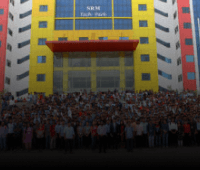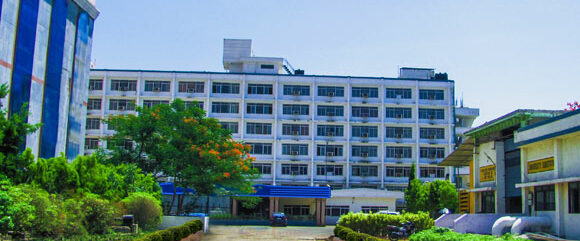
Physical And Analytical Chemistry Laboratory
- Home
- Faculty of Engineering & Technology
- Department of Chemical Engineering
- Physical And Analytical Chemistry Laboratory
About the Lab
The objective of the Physical and Analytical Chemistry laboratory sessions for Chemical Engineering students is to provide practical exposure and hands-on experience in various experimental techniques and methodologies essential for chemical engineering practice. Through hands-on experimentation, students will:
- Develop proficiency in laboratory skills, including proper handling of chemicals, use of laboratory equipment, and adherence to safety protocols.
- Gain practical experience in applying theoretical concepts learned in lectures to real-world chemical systems and processes.
- Enhance problem-solving abilities by designing experiments, analyzing data, and drawing meaningful conclusions.
- Explore the fundamental principles governing chemical reactions, equilibria, and thermodynamics, and their applications in engineering processes.
- Acquire proficiency in analytical techniques such as titration, spectroscopy, chromatography, and electrochemistry for chemical analysis and characterization.
- Understand the importance of precision, accuracy, and reproducibility in experimental measurements and data interpretation.
- Cultivate critical thinking skills by evaluating experimental procedures, troubleshooting challenges, and proposing improvements.
- Foster teamwork and collaboration through group-based laboratory activities, encouraging effective communication and cooperation among peers.
- Develop a foundation for lifelong learning and professional growth in the field of chemical engineering through hands-on laboratory experiences.
- Gain insights into the interdisciplinary nature of chemical engineering by integrating principles from chemistry, physics, mathematics, and engineering in laboratory experiments.
By achieving these objectives, students will be equipped with the practical skills, theoretical knowledge, and analytical mindset necessary for success in academic pursuits, research endeavors, and professional careers in chemical engineering.
Specifications
- Determination of critical solution temperature for phenol – water system
- Determination of molecular weight by Rast method
- Conductometric titration
- Determination of the rate constant of acid catalysed hydrolysis of an ester
- Phase diagram of three component system
- Partition coefficient of benzoic acid between benzene and water
- Estimation of sulphate by nephelometry
- Estimation of reducing sugar by dinitro salicylic acid (DNS) method
- Estimation of iron in the given sample by using UV- visible spectrophotometer
- Determination of fatty acid methyl ester using gas chromatography
- Estimation of aspirin drug in tablets using pH meter
- Estimation of manganese in the given sample of ore

CONDUCTIVITY METER

INCUBATOR SHAKER

MUFFLE FURNACE

NEPHELOMETER

WATER PURIFICATION SYSTEM

UV – VISIBLE SPECTROPHOTOMETER

GAS CHROMATOGRAPHY

MAGNETIC STIRRER

GAS CHROMATOGRAPHY

XENON LIGHT SOURCE

ELECTROCHEMICAL WORKSTATION
- High Performance Liquid Chromatography
- Gas Chromatography
- Syringe Pump
- High Vacuum Pump
- UV – Visible Spectrophotometer
- Refrigerated Centrifuge
- Digital Ultrasonic Cleaner
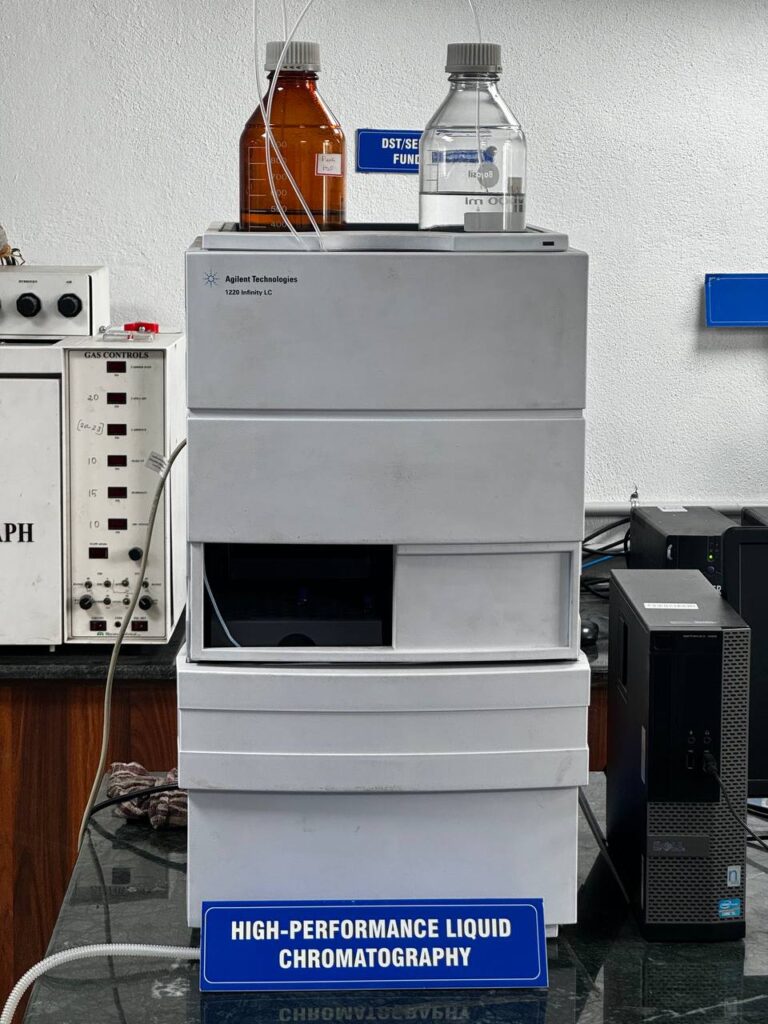
Specification:
Column Zorbox : Eclipse XDB C-18
Description: Narrow-bore 2.1 x 150 mm, 5 micron
Detector: UV Software: Chemstation
HPLC is a versatile and powerful analytical technique that plays a pivotal role in advancing research across diverse scientific disciplines, enabling researchers to address complex analytical challenges, discover new compounds, elucidate biological mechanisms, and contribute to scientific knowledge and innovation
- HPLC is extensively used for the separation, identification, and quantification of complex mixtures of compounds.
- In pharmaceutical research, HPLC is employed for drug discovery, development, and quality control.
- HPLC is utilized for the separation and analysis of proteins, peptides, and amino acids in biochemistry and proteomics research.
- Environmental scientists use HPLC to analyze pollutants, contaminants, and toxins in environmental samples, such as water, soil, air, and food.
- HPLC is employed in the isolation, purification, and characterization of natural products from plants, microorganisms, and marine organisms.
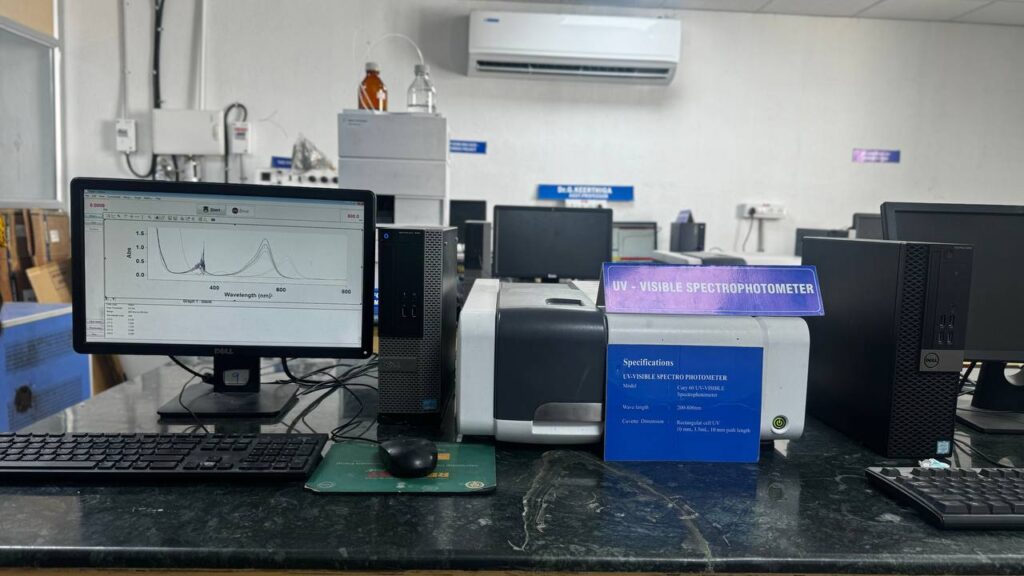
Specification:
Carrier gas: Nitrogen
Column: HP-5 polymethyl siloxane
Dimension: 30 m X 0.320 mm x 0.25 mm
Temperature limits: -60°C to 325°C
Detector: Flame Ionization Detector (FID) Software Chemstation
Gas Chromatography (GC) serves as a fundamental analytical tool across various scientific disciplines due to its versatility, sensitivity, and efficiency.
- GC is employed to separate complex mixtures of compounds into their individual components based on differences in their volatilities and interactions with the stationary phase.
- GC is utilized for quantitative analysis of analytes in research samples.
- Environmental scientists use GC to analyze pollutants, contaminants, and toxins in environmental samples, such as air, water, soil, and sediments.
- Food scientists and researchers use GC for the analysis of flavor compounds, food additives, contaminants, and pesticide residues in food and beverage products.
- Pharmaceutical researchers utilize GC for the analysis of drug compounds, impurities, degradation products, and formulation excipients.

Specification:
Model : NE-300, “Just Infusion”
Dimensions 8 ¾’ x 5 ¾’ x 4 ½’(LxWxH)
Max. Speed : 3.7742 cm/min
Min. Speed : 0.004205 cm/hr
Syringe pumps are versatile instruments used for precise and controlled fluid delivery.
- Syringe pumps are frequently used in organic and inorganic synthesis to deliver reagents at a controlled rate.
- They are employed to administer precise doses of drugs or therapeutic agents to biological systems such as cell cultures, animal models, or tissue constructs.
- Syringe pumps are essential components of microfluidic systems, where they deliver precise volumes of fluids through microchannels.
- They are integrated into analytical instruments such as liquid chromatography systems, where they deliver mobile phases at a constant flow rate for sample separation and analysis.
- Syringe pumps are utilized in biochemical assays to control the addition of substrates, enzymes, cofactors, and other assay components with precise timing and volumes.
- They are employed in electrochemical research to deliver electrolyte solutions or analyte samples to electrochemical cells or electrodes.
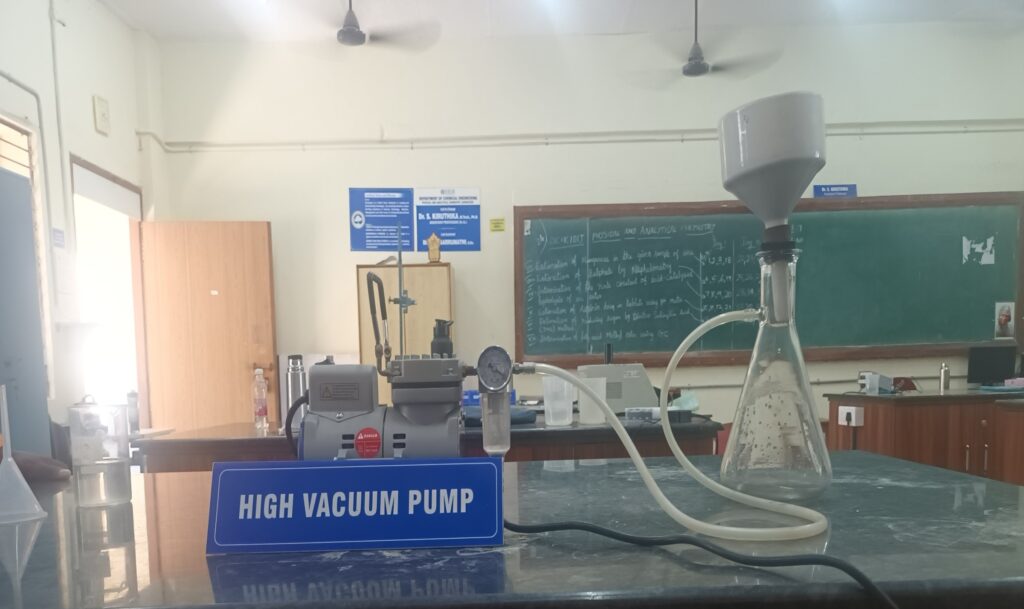
Specifications:
Max. Vacuum: 100 mbar
Max. flow rate: 17 L / min
Motor rotation: 1450 rpm
Dimension (W x D X H) in mm: 272 x 142 x 165
Electrical Requirement: 0.3 A
Power Consumption: 60 W
High vacuum pumps are indispensable tools in research laboratories, providing the capability to evacuate air and create extremely low-pressure environments.
- High vacuum pumps are used to create and maintain vacuum environments in chambers for various experiments and processes.
- High vacuum pumps are essential for maintaining vacuum conditions in electron microscopes, including scanning electron microscopes (SEM) and transmission electron microscopes (TEM).
- High vacuum pumps are employed in physical vapor deposition (PVD) and chemical vapor deposition (CVD) processes for thin film deposition onto substrates.
- High vacuum pumps are used in degassing systems to remove dissolved gases from liquids or solid materials.

Specifications:
Model: Cary 60 UV – Visible Spectrophotometer
Wavelength: 200 -800 nm
Cuvette Dimension: Rectangular cell UV 10 mm, 3.5 ml, 10 mm path length
UV-Visible spectrophotometers are indispensable instruments in research laboratories, offering versatile capabilities for analyzing the absorbance and transmission of light by samples across the UV and visible spectra.
- UV-Visible spectrophotometers are extensively used for quantitative analysis of analytes in solution.
- They are employed for qualitative analysis and identification of compounds based on their characteristic absorption spectra.
- UV-Visible spectrophotometers are integral to biochemical assays for analyzing biomolecules such as proteins, nucleic acids, enzymes, and metabolites.
- They are used in environmental research for analyzing pollutants, contaminants, and natural organic matter in water, air, soil, and sediment samples.
- UV-Visible spectrophotometers are utilized for studying chemical kinetics and reaction mechanisms by monitoring changes in absorbance over time.

Specifications:
Max. Speed: 20000 RPM
Max. Capacity: 1200 ml
Max RCF: 37570
Refrigerated centrifuges are essential equipment in research laboratories, providing the capability to separate and isolate biological samples, cell suspensions, and subcellular components based on their density and size.
- Refrigerated centrifuges are used for the isolation and purification of cellular components such as nuclei, mitochondria, and organelles from tissues or cell cultures.
- They are utilized in protein biochemistry for the isolation and purification of proteins from cell lysates, tissue homogenates, or recombinant expression systems.
- Refrigerated centrifuges play a crucial role in drug discovery and pharmacology research for studying drug metabolism, pharmacokinetics, and drug-target interactions.

Specifications:
Temperature 0-80°C can be adjustable
Timer 1-99 minutes can be adjustable
Red LED digital display
Frequency 40kHz
Power supply : AV 220V/50 Hz
Digital ultrasonic cleaners are valuable tools in research laboratories for various cleaning and sample preparation applications.
- Digital ultrasonic cleaners are used to prepare samples for analysis by removing contaminants, residues, and surface impurities.
- In biological and medical research, digital ultrasonic cleaners are used to clean laboratory equipment, surgical instruments, implants, and medical devices.
- Digital ultrasonic cleaners are utilized for surface modification and cleaning treatments in materials science and surface chemistry research.




